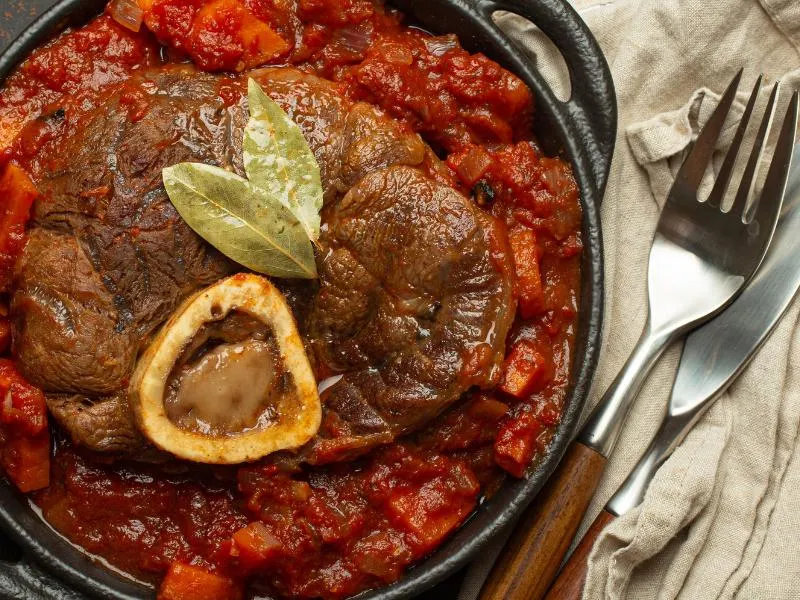Ossobuco alla Milanese
Braised veal shanks with white wine, broth, and aromatic vegetables topped with gremolata.
👉 View Authentic Recipe 👈
About This Dish
Ossobuco alla Milanese is a classic dish from Milan in the Lombardy region of northern Italy, dating back to at least the late 19th century. The name “ossobuco” translates to “bone with a hole,” referring to the marrow-filled hole in the center of the cross-cut veal shank that forms the foundation of this hearty dish.
Traditional Ossobuco alla Milanese combines slow-braised veal shanks with a soffritto of onions, carrots, and celery, white wine, and broth. The long, gentle cooking process transforms the tough meat into tender perfection while developing a rich sauce. Authentically, it’s finished with gremolata—a fresh mixture of lemon zest, garlic, and parsley—which cuts through the richness of the dish with brightness.
This dish is typically served as a secondo (main course) at celebratory meals and Sunday family gatherings, especially during colder months. While modern interpretations sometimes use tomatoes, the classic Milanese version is tomato-free and traditionally served with risotto alla Milanese, a golden saffron-infused risotto that complements the tender veal and its savory sauce.
🧑🍳 Analyzed by CucinaBot
Why This Dish Works
Ossobuco achieves its remarkable depth of flavor through several culinary principles. The initial browning of the veal creates a Maillard reaction, developing complex flavors that form the dish’s foundation. The slow braising method allows collagen in the tough shank to break down into gelatin, creating a silky mouthfeel and tender texture. Meanwhile, the marrow slowly melts from the bone’s center, enriching the sauce with unctuousness and body, while the gremolata’s acidic and aromatic components balance the dish’s richness through flavor contrast.
Key Success Factors
- Proper Shanks: Select 5-6 cm thick veal shanks with the bone intact and tied with kitchen string to maintain shape during cooking
- Initial Sear: Brown shanks thoroughly on all sides before braising to develop flavor compounds and color
- Low and Slow: Maintain a gentle simmer (never boil) for at least 2-2.5 hours until meat is fork-tender but still attached to the bone
- Gremolata Timing: Add gremolata only in the final minutes or at serving to preserve its aromatic qualities
Common Pitfalls
Many non-authentic recipes add tomatoes or tomato paste, which isn’t traditional in the Milanese version (though common in other regional variations). Another common mistake is insufficient cooking time—the dish requires patience, as rushing the braise results in tough meat that hasn’t benefited from collagen breakdown. Some recipes also omit tying the shanks with kitchen string, leading to meat that separates from the bone during the long cooking process.
How to Judge Authenticity
When reviewing recipes, look for these markers of authenticity:
- Uses cross-cut veal shanks (not beef or other substitutes)
- Includes white wine but no tomatoes in the classic Milanese style
- Specifies long, slow braising (minimum 2 hours)
- Finishes with freshly-made gremolata (lemon zest, garlic, and parsley)
- Suggests serving with risotto alla Milanese, not polenta or pasta